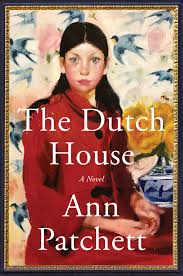Chapter 15
byChapter 15 intricately explores the themes of memory, family, and the unrelenting passage of time, drawing poetic parallels between ballet and the physical spaces that shape our lives. The chapter opens with May, a young and promising ballerina whose unwavering dedication to dance earns her a spot in the prestigious School of American Ballet. Her role as a mouse in The Nutcracker at the New York City Ballet becomes a significant milestone, one that fills her family with pride and fosters a deep sense of shared purpose. This familial support for May’s passion highlights their enduring commitment to one another, despite the undercurrents of past trauma and unresolved emotions. Their willingness to invest time and energy into her dreams serves as a contrast to the fractured relationships of their own childhood, subtly reflecting their desire to break generational cycles of neglect.
The performance itself serves as a catalyst for the narrator’s reflection, pulling him into a vivid recollection of his own past. As he sits in the audience, the grandeur of the set and the elegant movements on stage evoke memories tied to the Dutch House—their childhood home and a symbol of both loss and longing. The scene blurs the boundaries between past and present, reinforcing the idea that certain places and experiences remain etched in the subconscious, shaping one’s emotional landscape long after they have physically left them behind. The Dutch House, much like the ornate world of ballet, carries an almost mythical presence in their lives, serving as a constant reminder of what was taken from them. This interplay between memory and reality reinforces the notion that while people move forward, the echoes of the past never truly fade.
A significant turn in the chapter occurs when Maeve suffers a sudden health scare following the performance, an incident that underscores the fragility of life and the weight of familial responsibilities. Danny’s immediate concern and protective instincts take over, illustrating the deep-seated love he holds for his sister, despite their unspoken struggles. The moment forces him to recognize the impermanence of their time together and the need to cherish the present rather than remain entangled in past grievances. Maeve, ever the composed and resilient figure, brushes off the severity of the moment, though it leaves a lasting impression on Danny. The experience becomes yet another moment where the bonds of family are tested, reminding them that, regardless of their history, they remain bound by loyalty and love.
As dawn approaches, Maeve and Danny embark on an impromptu visit to the Dutch House, driven by a mix of nostalgia and the need for closure. Standing outside their former home, they are confronted by the reality that the house, once a place of security and belonging, now exists as a relic of their past, indifferent to their continued attachment. Maeve, in a rare moment of emotional clarity, decides that it is time to release the hold the Dutch House has had on her. This quiet resolution symbolizes her readiness to step forward rather than be defined by the pain and resentment that the house has long represented. For Danny, however, the process of letting go is far more complex, as his identity remains deeply intertwined with the house’s history.
The chapter closes on a poignant note, emphasizing the delicate balance between preserving one’s past and allowing oneself the freedom to move forward. Through ballet, memory, and the symbolism of the Dutch House, the narrative captures the beauty of impermanence—the understanding that while some things are lost, others continue to evolve. Maeve’s willingness to move on signals growth, while Danny’s reluctance hints at the lingering grip of nostalgia and the unresolved emotions that still tether him to his past. This deeply moving chapter encapsulates the complexities of love, loss, and the quiet transformations that shape a person’s journey toward healing.


